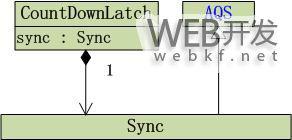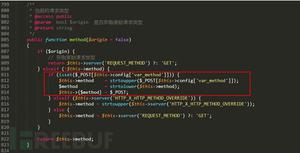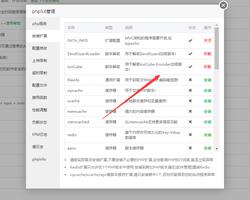python如何实现多线程

python实现多线程的方法:
1、Thread直接创建子线程
首先可以使用 Thread 类来创建一个线程,创建时需要指定 target 参数为运行的方法名称,如果被调用的方法需要传入额外的参数,则可以通过 Thread 的 args 参数来指定。
import threadingimport time
def target(second):
print(f'Threading {threading.current_thread().name} is running')
print(f'Threading {threading.current_thread().name} sleep {second}s')
time.sleep(second)
print(f'Threading {threading.current_thread().name} is ended')
print(f'Threading {threading.current_thread().name} is running')
for i in [1, 5]:
thread = threading.Thread(target=target, args=[i])
thread.start()
print(f'Threading {threading.current_thread().name} is ended')
运行结果:
Threading MainThread is runningThreading Thread-1 is running
Threading Thread-1 sleep 1s
Threading Thread-2 is running
Threading Thread-2 sleep 5s
Threading MainThread is ended
Threading Thread-1 is ended
Threading Thread-2 is ended
如果想要主线程等待子线程运行完毕之后才退出,可以让每个子线程对象都调用下 join 方法:
threads = []for i in [1, 5]:
thread = threading.Thread(target=target, args=[i])
threads.append(thread)
thread.start()
for thread in threads:
thread.join()
运行结果:
Threading MainThread is runningThreading Thread-1 is running
Threading Thread-1 sleep 1s
Threading Thread-2 is running
Threading Thread-2 sleep 5s
Threading Thread-1 is ended
Threading Thread-2 is ended
Threading MainThread is ended
2、继承Thread类创建子线程
另外也可以通过继承 Thread 类的方式创建一个线程,该线程需要执行的方法写在类的 run 方法里面即可。上面的例子的等价改写为:
import threadingimport time
class MyThread(threading.Thread):
def __init__(self, second):
threading.Thread.__init__(self)
self.second = second
def run(self):
print(f'Threading {threading.current_thread().name} is running')
print(f'Threading {threading.current_thread().name} sleep {self.second}s')
time.sleep(self.second)
print(f'Threading {threading.current_thread().name} is ended')
print(f'Threading {threading.current_thread().name} is running')
threads = []
for i in [1, 5]:
thread = MyThread(i)
threads.append(thread)
thread.start()
for thread in threads:
thread.join()
print(f'Threading {threading.current_thread().name} is ended')
运行结果:
Threading MainThread is runningThreading Thread-1 is running
Threading Thread-1 sleep 1s
Threading Thread-2 is running
Threading Thread-2 sleep 5s
Threading Thread-1 is ended
Threading Thread-2 is ended
Threading MainThread is ended
守护线程
在线程中有一个叫作守护线程的概念,如果一个线程被设置为守护线程,那么意味着这个线程是“不重要”的,这意味着,如果主线程结束了而该守护线程还没有运行完,那么它将会被强制结束。
在 Python 中我们可以通过 setDaemon 方法来将某个线程设置为守护线程:
import threadingimport time
def target(second):
print(f'Threading {threading.current_thread().name} is running')
print(f'Threading {threading.current_thread().name} sleep {second}s')
time.sleep(second)
print(f'Threading {threading.current_thread().name} is ended')
print(f'Threading {threading.current_thread().name} is running')
t1 = threading.Thread(target=target, args=[2])
t1.start()
t2 = threading.Thread(target=target, args=[5])
t2.setDaemon(True)
t2.start()
print(f'Threading {threading.current_thread().name} is ended')
运行结果:
Threading MainThread is runningThreading Thread-1 is running
Threading Thread-1 sleep 2s
Threading Thread-2 is running
Threading Thread-2 sleep 5s
Threading MainThread is ended
Threading Thread-1 is ended
互斥锁
在一个进程中的多个线程是共享资源的,比如在一个进程中,有一个全局变量 count 用来计数,现在声明多个线程,每个线程运行时都给 count 加 1,代码实现如下:
import threadingimport time
count = 0
class MyThread(threading.Thread):
def __init__(self):
threading.Thread.__init__(self)
def run(self):
global count
temp = count + 1
time.sleep(0.001)
count = temp
threads = []
for _ in range(1000):
thread = MyThread()
thread.start()
threads.append(thread)
for thread in threads:
thread.join()
print(f'Final count: {count}')
运行结果:
Final count: 69
由于 count 这个值是共享的,每个线程都可以在执行 temp = count 这行代码时拿到当前 count 的值,但是这些线程中的一些线程可能是并发或者并行执行的,这就导致不同的线程拿到的可能是同一个 count 值,最后导致有些线程的 count 的加 1 操作并没有生效,导致最后的结果偏小。
所以,如果多个线程同时对某个数据进行读取或修改,就会出现不可预料的结果。为了避免这种情况,我们需要对多个线程进行同步,要实现同步,我们可以对需要操作的数据进行加锁保护,这里就需要用到 threading.Lock 了。
加锁保护
某个线程在对数据进行操作前,需要先加锁,这样其他的线程发现被加锁了之后,就无法继续向下执行,会一直等待锁被释放,只有加锁的线程把锁释放了,其他的线程才能继续加锁并对数据做修改,修改完了再释放锁。
这样可以确保同一时间只有一个线程操作数据,多个线程不会再同时读取和修改同一个数据。
更多Python知识,请关注:!!
以上是 python如何实现多线程 的全部内容, 来源链接: utcz.com/z/528386.html







